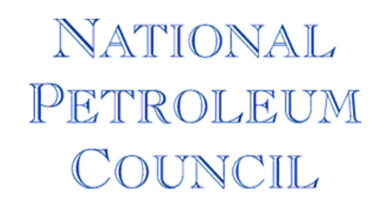Drilling Ahead: IADC, API tackle people, safety – See DC’s webcasts
By Mike Killalea, editor & publisher
People and safety top the industry’s priority list. Not exactly a news flash, true. As I wrote in the September/October 2013 DC, well control is back with a vengeance. IADC is leading the charge, with development of a single-standard Well Control Institute and the rewrite of the landmark IADC Deepwater Well Control Guidelines, among other initiatives. API has been busy, too. Under the leadership of Frank Gallander, Chevron, an API workgroup transformed API RP 53 to a full-fledged standard. And when a new standard as central to safety and environmental stewardship as S53 hits the streets, regulators sit up and take notice. The Texas Railroad Commission, to name one, is adopting S53 in its entirety. Other states and national governments and agencies are likely to follow suit. S53 is a critical document with implications for all sectors — contractors, operators, service companies and manufacturers alike. Mr Gallander and task group member Mel Whitby, Cameron, outlined the major points of S53 in the opening panel for the 2013 IADC Well Control Conference of the Americas, held in Galveston during August.
S53 webcast
Drilling Contractor, with copious quantities of help from Messrs Gallander and Whitby, prepared a succinct 32-minute webcast on the development of S53. Cameron graciously sponsored the webinar. (Use QR code to register. The video will be live until at least January 2014.) The webcast struck a chord. Nearly 1,000 registered within a few hours of our announcement. Even more tellingly, viewers submitted nearly 100 questions on the new standard. (Webcast registrants can download the consolidated Q&A’s.)
Path to a standard
The path to transforming the venerable RP was not without friction. Disagreements among people of good intent are not uncommon. But Mr Gallander’s team short-circuited counterproductive bickering. “We would get into a stalling point,” recalled Mr Gallander, consultant-drilling & completion operations for Chevron Upstream Gas. “To move beyond that, we established a set of benchmarks that would help us to determine which way to move forward. The two priorities we deemed – and this is in order – were life and the environment…. “Everything followed that.” The safety and environment mandates were passed to the subgroups as part and parcel of their marching orders. Those two principles drove consensus building. “It became less negotiable, let’s say,” Mr Gallander noted. “The gold standard had an impact.”
What’s new?
The goal was to provide a written standard to improve safety; provide guidance that’s specific today, yet broad enough for relevance tomorrow; and avoid unintended consequences. Further, all S53 elements had to be measurable, testable, repeatable and reliable. “It’s a pretty broad scope,” remarked Mr Gallander. The new standard contains more than 800 new “shall” statements. It also provides standardization on ROV interfacing, clarifies purpose and objectives for accumulator drawdown tests, offers more guidance on equipment traceability, and helps enhance communications between manufacturers and equipment owners. The workgroup strove to develop an all-inclusive standard, while foreseeing unintended consequences. For instance, the implications for, say, hookload capacity must be considered as more rams are added. Substructure height, vessel stability, derrick height and work area are similarly affected. “All these things propagate into one another,” Mr Gallander observed. But what about future technology, particularly for BOPs? “New technology has to meet or exceed the same requirements established in 53, which are for existing equipment,” he explained. “We had to build a balance between the current fleet of rigs and those under construction. We retained a focus on the priorities established early in the project – life and the environment.”
Building performance-ready engineers
In another high-value webinar, IADC tackles the daunting challenge of accelerating competency development. PetroSkills graciously sponsored this upcoming webcast on “How to Build a Performance-Ready Drilling Engineer.” This event, airing on 14 Nov, explains in practical terms what a performance-ready technical professional must learn and best practices to accelerate competency. The webinar will include a practical scenario.
We’re ready
We need to develop competent people fast. We must ensure drilling safety. For both endeavors, IADC is there. Join us. It’s your organization.
Mike Killalea can be reached via e-mail at mike.killalea@iadc.org.
Click here to register for and to view the S53 webcast.
Click here to register for the webcast on Building a Performance Ready Drilling Engineer.



